The previous post was the captured avi.
Here is the one converted with sony movie studio (mainconcept):
And here is the one converted with nero:
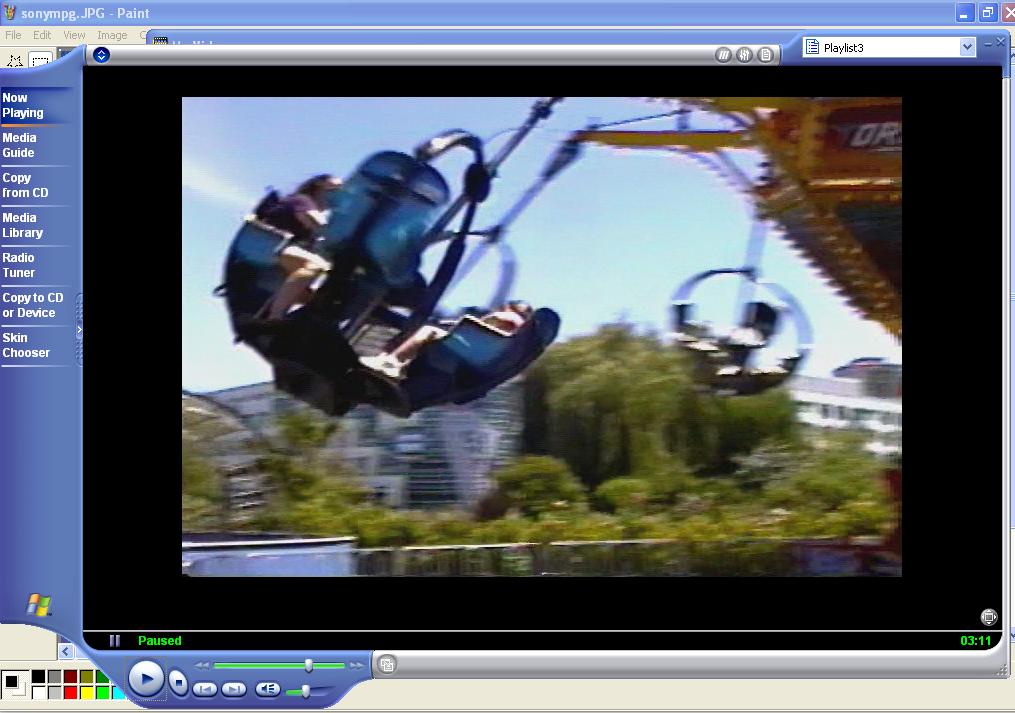
+ Reply to Thread
Results 31 to 60 of 68
-
-
Well, the 1st screen shot (TmpGenc) shows terrible Macroblocking. Your bitrate is far too low. Increase it a lot.
The second one looks like interlace problems. The field order is probably reversed. Swap it. Encode from interlaced source to interlaced mpeg. Do not de-interlace. -
What bugster said - I was thinking the exact same thing about each.
The TMPGEnc one is a classic case of either insufficient bitrate or corrupted source, and we can be pretty sure that it's not the latter.
The thing with interlacing is that it looks like that on your computer, but is fine on your TV. You should keep it interlaced if you intend to be watching this on your TV.
PS. If you want to add multiple pictures to the one post, put the [*img]image.ext[/img*] (without the *'s of course) in the main text, browse to the first picture, then submit. Then edit your post, browse to the second picture, then submit, and so on until you have added all the pictures. It takes a little while but is a bit easier to follow If in doubt, Google it.
If in doubt, Google it. -
-
I understand about the interlacing on TV versus DVD. However, the blurring with motion that I got with the Sony MainConcept encoder was still there even when I burned it to a DVD and watched it on TV. It wasn't lines, it was just choppy, blurry motion.
The biggest puzzle to me is that everything that I have encoded with TMPGenc has been macroblocked. Last night I encoded with TMPGenc at CBR 8000 with it set to interlace and it still looked like this, so I don't think low bitrate is the problem. I have some other setting messed up, or my captured source is messed up.
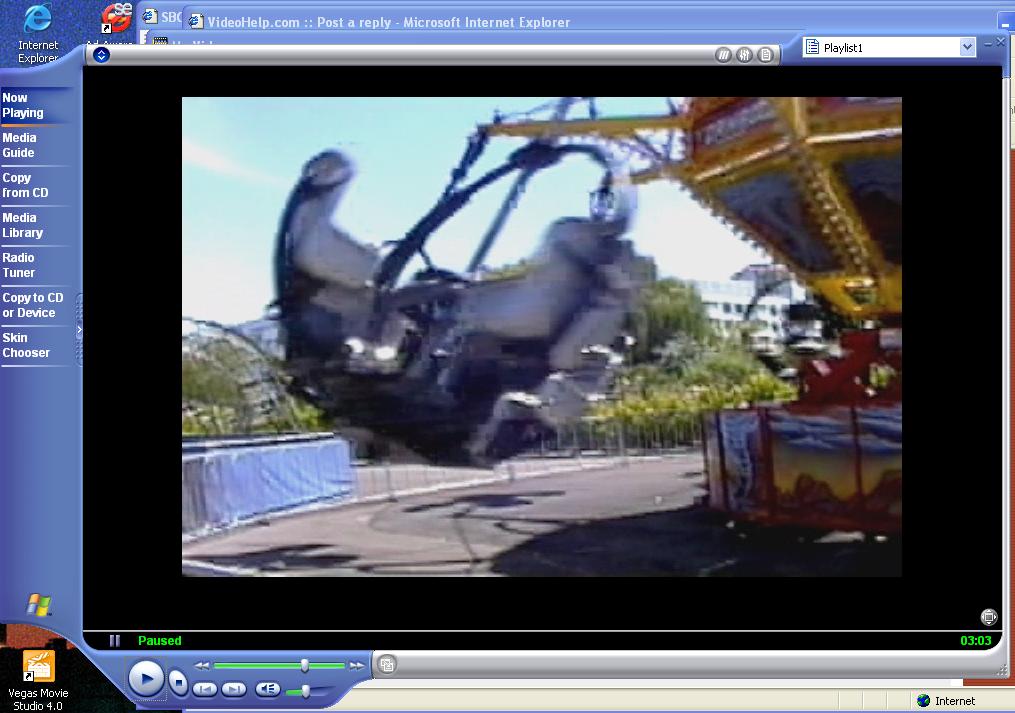
FulciLives said:
In case you didn't wade through our entire discussion, the reason he said this was because TMPGenc's wizard suggested that I had deinterlaced video. So I am wondering if there is something wrong with my capture. I downloaded PICVideo today and will try capturing using that, hopefully tomorrow. Another piece of evidence in support of the fact that something is wrong with my capture is that when I tested several methods of encoding, the best results came from capturing direct to mpeg2 with neoDVD that came with my capture card. I would have thought that would be the worst! However, I followed the guide from the DVDfaq website for iuVCR, so I am unsure what to change except to try PICVideo and maybe uncompressed AVI.I still think there might be an issue with the original capture.
I don't normally use HuffyUV (only because my computer is slow) so maybe someone that uses it all the time can offer some help but there should be a threshold option and if it is not set up properly that could be causing an interlace problem.
I use PICVideo MJPEG so maybe download that and give it a try. Only thing is you have to register it if you decide to use it because it puts a PICVideo logo on the screen of your capture until it is registered BUT it can be tested that way for capture quality etc.
Finally, at some point as I was puzzling over this today I had to chuckle over the following comment by FulciLives:
Like the rest of this isn't tricky?Encoding AC-3 can be "tricky" so if you don't feel comfortable with doing AC-3 use LPCM WAV audio.
Thanks for everyone's help! Someday I will figure all this out. I feel like I am studying for a big exam or something, trying to understand and digest all this new information. -
Yes I still think something is "screwy" with your capture ... this is based on the fact that you said the TMPGEnc WIZARD detects the captured file as non-interlaced.
Let us know how it goes with the PICVideo MJPEG codec.
Also here is an old but still good guide on the settings in TMPGEnc
http://dvd-hq.info/Compression.html
Please note that even using the WIZARD mode you can still get into just about all of the options by clicking on the EXPERT TAB which is available on one of the steps as you go through the WIZARD.
- John "FulciLives" Coleman"The eyes are the first thing that you have to destroy ... because they have seen too many bad things" - Lucio Fulci
EXPLORE THE FILMS OF LUCIO FULCI - THE MAESTRO OF GORE
-
Okay, after experimenting tonight I have the following results. (sorry, I couldn't get my AVI files to play in anything that would deinterlace or take a screen shot, but I thought they might still be useful.) The mpg screen shots were captured with WinDVD.
Captured using HuffyUV compression, a shot from the AVI file:
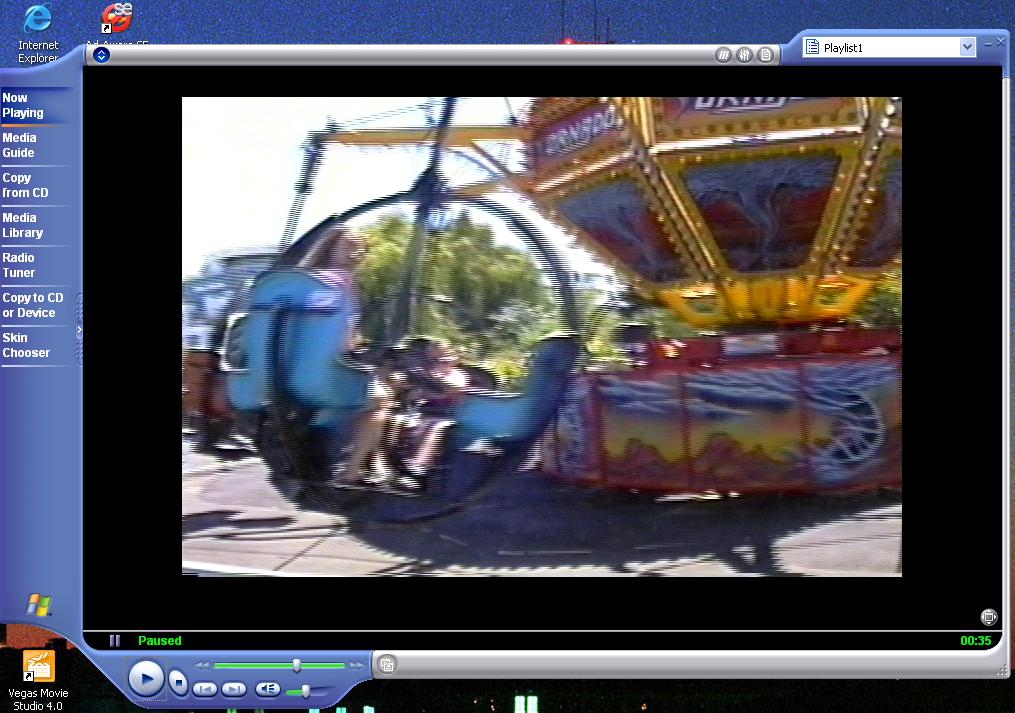
Converted from that AVI file using TMPGenc:
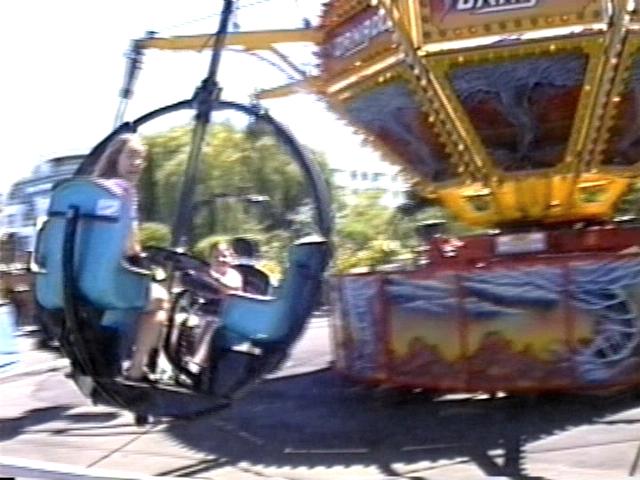
Captured using PicVideo, a shot from the AVI file:

Converted from that AVI file using TMPGenc:
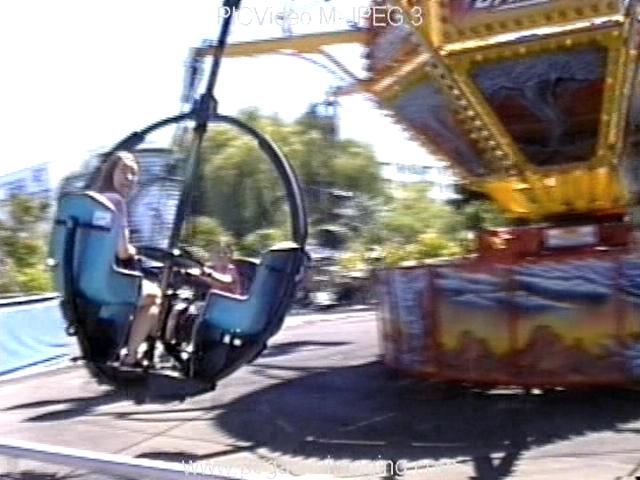
So, what have I learned from all this?
I can now make a screen shot (some that are deinterlaced and without a border from my desktop), post it to the forum, and edit to get more than one in the same post!
I think that the severe macroblocking in TMPGenc resulted somehow from the way MovieStudio saved or rendered my edited AVI file. I skipped that step this time, just capturing and converting. When I used the TMPGenc wizard, it did something it called "judging field order" and came up with the correct settings, whether I had captured with huffyUV OR PicVideo. I don't think it did before.
However, the quality is still not terrific. I watched the original footage tonight on my TV through my camcorder, and while it is not perfect, I think it is better than any of this. Also, the HuffyUV still seems more macroblocked than the PicVideo. My understanding is that HuffyUV is better for editing, and PicVideo isn't free, so I would love to make HuffyUV work.
Comments or suggestions of what to try? Is the problem my cheap capture card? Would a Canopus ACDV-50 solve all this? I might be willing to pay $200 if everything would work nicely! Or is there a "better" choice?
BTW, I got AIM to work, screen name is brookelh66. -
It would help A LOT if you use VirtualDubMod to take your screen caps from. You can use the copy and paste function and just grab the video window without all the other junk around it.
Plus you can step frame by frame so you can find a "good" frame to capture from.
But it looks like you got things much better now.
- John "FulciLives" Coleman"The eyes are the first thing that you have to destroy ... because they have seen too many bad things" - Lucio Fulci
EXPLORE THE FILMS OF LUCIO FULCI - THE MAESTRO OF GORE
-
Still looks to me like you got something kookoo going on
w/ your encoding settings inside TMPG.
Looks like TMPG is performing some kind of de-intelace
or blend. But, then again, you using the wrong tool to
take pics with. virtualdubMOD is the best to use for this
situation. You'll get 720 x 480 (assuming you encoded
w/ 720 x 480 resoultion) to begin with.
Windvd and powerdvd "distort" the pics. Don't use them to
demonstrate your problems. They will confuse us and cause us to
lead you in the wrong path.
Using vdubMOD, you import your MPEG-2 source file (usuallly it's
*.m2v or *.mpv or *.mpg files) then, navigate to the frames in
question, and press Ctrl+1 (or Ctrl+2) and then past that into
paintshop pro or whatever graphics application you are using.
-vhelp -
OK, I downloaded VirtualDubMOD and think I see how to get a screenshot. I will try that next time. I have downloaded more programs in the last 3 weeks than in the previous 6 years! This and VirtualDub intimidate me because there are no little popups when I hover over a button to tell me what they do. The learning curve appears a little steeper, if that is possible! Since I can't use VirtualDub to capture because I have a WDM-based capture card instead of a VFW-based capture card, I haven't tried to learn it. Thanks for suggesting that for screen shots; free is better than WinDVD, though it doesn't seem to deinterlace it.
-
HuffYUV cannot create macroblocks. It is a lossless (in the YUV domain, in YUY2 layout) codec.
MPEG, JPEG, and DV create macroblocks because the process of compression breaks the picture down into 16x16 pixel blocks. The codecs then reduce the number of colors in each block. So instead of 256 possible colors (Because there are 256 pixels in the block) each block might have only 1, 10, 20 or 50. The end result is visible discontinuites between blocks if you compress too much -- macroblocks.
HuffYUV simply takes a horizontal line of YUV pixels and runs them through a huffman compression. The output from the decompressor is exactly the same as YUV input. (If your source is true RGB you can argue that there is a loss of color resolution in the RGB to YUV (YUY2) conversion -- this is where the arguments about HuffYUV not being completely lossless come from. That is probably much more detail than you want to know...)
As a test you should try a capture with uncompressed RGB. You may drop frames but from the frames you do capture you'll be able to tell unabiguously what the card is capturing.
From your sample images it's hard to tell if the artifacts are from the JPEG compression you used for posting or in the original AVI files. If they are accurate representation of the caputures there is something wrong with you capture card or process!
This is tangential, but why are you resizing your caps to 640x480 with TMPGENC? You should leave them at 720x480 if your going to burn DVDs. And you should not deinterlace. -
Wow! You guys are so willing to give me advice. Thank you, thank you!
I only used WinDVD because someone earlier recommended it, I thought. Perhaps I misunderstood; perhaps it was just for viewing, not for screenshots.
junkmalle said:
I understand that HuffyUV doesn't create the macroblocks; what I meant was the macroblocks I got with TMPGenc using a Huffy compressed file.HuffYUV cannot create macroblocks. It is a lossless (in the YUV domain, in YUY2 layout) codec.
junkmalle also said:
I don't think that I am deinterlacing, and I have no idea what resizing my caps means. I am not doing that on purpose!!!This is tangential, but why are you resizing your caps to 640x480 with TMPGENC? You should leave them at 720x480 if your going to burn DVDs. And you should not deinterlace.
So, here are the pics with VirtualDubMod.
Here is an uncompressed avi frame:

Here is a shot from the avi captured using HuffyUV compression:
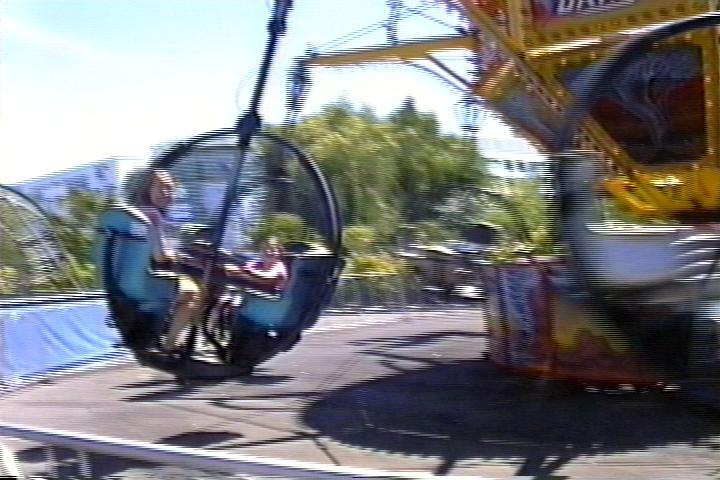
And here is a shot from the mpg converted with TMPGenc on the HuffyUV compressed avi:
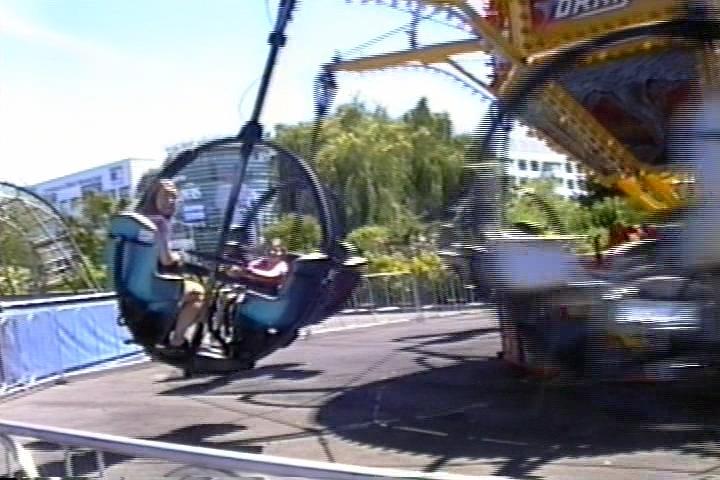
-
But the TMPGENC pictures you posted earlier have been deinterlaced.Originally Posted by brookelh
The source AVI file images are 720x480. The TMPGENC images (from earlier) are 640x480. That's what I mean by resizing.Originally Posted by brookelh
Actually for both these issues the problem appears to be the player you were using. Many players will automatically deinterlace (because interlaced video looks terrible on a computer monitor) and resize (to establish the correct 4:3 picture aspect ratio) on the fly. The new images, exported from VirtualDubMod, don't have those problems.
Looking at you latest captures, a big part of the problem appears to be your capture card. I opened the jpeg from uncompressed AVI capture, used the deinterlace filter to throw away one field (replacing it with a copy of the other field), then cropped down to the top right corner and enlarged with the nearest neighbor filter. The point of this is to look at a single field, enlarged 2x:
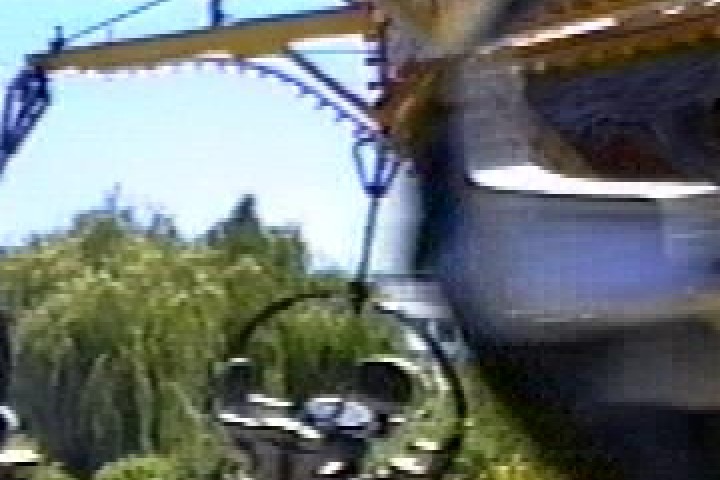
As you can see there are all kinds of weird blocky artifacts. I don't think these were added by the JPEG compression -- given the size of the JPEG file it wasn't compressed enough to introduce those problems.
You might be able to improve on this by capturing at a different frame size. Some cards do much better at job at 688x480 for example (search here for info on BT chipset based cards). The difference can be so striking that it's much better to capture at the lower size and resize or pad than it is to capture at 720x480.
On to the TMPGENC problems:
Although you didn't post exactly the same frame (that would have been helpful) it looks like the picture quality has decreased significantly after conversion to MPEG.
I have seen TMPGENC's bitrate setting get stuck on occasion. When this happens the output file stays exactly the same size even though you've changed the bitrate and are using constant bitrate mode. The different bitrate is visible on the Setting dialog but it's not reflected in the output file. So be sure that TEMPENC is really using the the bitrate you selected by examining the resulting MPEG files. For example a 8000 kbps file should be much larger than a 4000 kbps file (maybe not twice as large because both will have the same amount of audio).
Other than that, it might just be that the problems with your initial capture are exacerbated by TMPGENC. Under normal circumstances TEMPENC usually does a good job. -
brookelh,
I went to the Avermedia web site and looked at the details of your card (as indicated in your profile):
http://www.aver.com/products/dvm_AVerDVD_ezMaker.shtml
There's not much detail there about what the card really captures. About the only thing they say is:
DVD Format
MPEG-2 VBR (5Mbps Average, 8.1Mbps Maximum)
PCM Audio 48KHz/16 bits 2 Channels
VCD Format
MPEG-1 Video 1152 kbps
MPEG-1 Layer 2 Audio 224 kbps
But that is under "Writing format" which probably just means that's what it puts on DVD/CD media. It's not clear whether the card is directly capturing as MPEG (and saving as AVI by decoding the MPEG) or if it's capturing YUV data (what most cards capture) and converting to MPEG via software.
You might be able to get a feel for this by looking at CPU usage while capturing. You can use Task Manager to monitor CPU usage (Use Alt-Ctrl-Del to start Task Manager). If capturing to MPEG uses less CPU than capturing to AVI (with say HuffYUV or MJPEG) compression, then the card is probably capturing directly to MPEG (and doing additional work to convert and save to AVI). If on the other hand MPEG mode takes more CPU power than AVI the card is probably capturing YUY video and converting to MPEG on the fly.
If the latter is the case your problems might stem from a poor MPEG codec. Realtime codecs take lots of shortcuts to ensure they can keep up with the capture (so as not to drop frames). So they don't deliver the best looking results.
If the former is the case, the problem could be a poor hardware MPEG encoder on the card itself.
I also did a quick search for independent reviews of the card and didn't find any. All I found was one customer review at some merchant's site. That person seemed to like the card but there's no telling whether the review is genuine and whether the writer really had any knowledge of video capture. -
Ok, I did a quick test of that.
Capturing avi with iuVCR using HuffyUV yielded a cpu usage of 21-24.
Capturing mpg with neoDVD at Best quality yielded a cpu usage of 17-19.
I realize it would be a better test if I could use the same program for both, but I don't think I have one program that will do both. Is that difference statistically significant?
I bought this card because I thought that a $50 card would only be doing software mpeg conversion, not hardware. Therefore I reasoned that with the right software it would work fine. The card got overall positive reviews here, but rereading them now that I understand them, I think most people using it are capturing into mpeg and going straight to a dvd without trying to edit.
Some sort of hardware problem would also explain the fact that the best results I have gotten so far have come from capturing into mpeg2 with neoDVD, whereas the other methods (eg TMPGenc) should yield better results.
Since I only spent $30, it would not be that much of a loss, and I have learned A LOT for a $30 investment. (I browsed the newbie forum this morning and found I understood a lot of the questions and answers, and what the right questions SHOULD be!)
However, I hate the thought of wading into the capture card opinion fray again...... -
The reviews here indicate there are two versions of your capture card. One is BT878 based and the other is NEC 7130 based (I think those reports of NEC 7130 are wrong and it's actually this Philips 7130 chip http://www.semiconductors.philips.com/pip/SAA7130.html -- which is not hardware MPEG). The BT chipset (definitely not hardware MPEG either) is notorious for yielding better results at certain frame sizes. The size I've seen bandied about is 688x480. Can you set different frame sizes for your captures? If you search the formums here for BT chipsets you'll see lots of threads that discuss this. For example:
https://www.videohelp.com/forum/archive/t199669.html
Another thing you might try is capturing at 352x480 instead of 720x480. The smaller frame size can result in less macroblocking since there is only half as much picture to encode. 352x480 is still fully DVD compliant and the drop in horizontal resolution may be less noticable than the macroblocking at 720x480. Worth a try anyway.
Have you actually burned a DVD from your captured MPEG 2 files? Macroblocks that are obvious in a still frame are often difficult to see when you watch it flying by at 60 fields per second.
You can edit MPEG2 files with the right programs. If you're not doing extensive filtering or color correction it's not really a problem. Check out Womble's MPEG editing program. It's smart enough not to reencode for simple things like cuts, pastes, and trims. For crossfades, fade ins, fade outs, and other transition effects it only reencodes the portion that it needs to.
One last thing: the camcorder footage you're capturing is from an analog camcorder right? If it's a digital camcorder (Digital8, MiniDV) you should be capturing via firewire. That is essentially a file copy (ie an exact copy of the digital video on the camcorder) rather than a video capture. -
I have an AverTV Stereo PCI capture card which is a BT based card. With the supplied drivers you have to capture NTSC at 688x480 (I add 16 black on either side to get it to 720 width for DVD spec). PAL is 696x576 and again you pad 12 on either side to get it up to 720 width for DVD.
I've heard good things about the Philips chipset though and it is tempting to get one.
I don't know which capture cards use the Philips chipset but here is a LINK to one that does.
I never used a Philips based PCI card but my understanding is that for NTSC it is either 720 or 704 for the width, but I'm not sure which. Based on my reading it isn't very clear (I guess because there are more than one Philips chipset).
If you use a BT based capture card you can use the BTwincap driver. It does 712x480 for NTSC (not sure for PAL).
Either way you are looking at about $50.00 or so.
- John "FulciLives" Coleman
P.S.
Here is a link to some screen captures I did with my BT based capture card:
CLICK HERE FOR THE LINK"The eyes are the first thing that you have to destroy ... because they have seen too many bad things" - Lucio Fulci
EXPLORE THE FILMS OF LUCIO FULCI - THE MAESTRO OF GORE
-
I would be very happy if my captures looked like that!
And yes, my video is analog! Oh, that it were digital! My next camcorder is going to be a mini dvd one to solve ALL of these problems. (But since I just bought a new computer to edit the analog video I already have, that will have to wait until next year.)
I will play around with it a little bit more. I captured and burned a DVD today with the neoDVD software (no editing); it looks really good, so surely it is possible to capture a decent avi. I really want to use the Sony Movie Studio software I bought to play with making movies; what I did already was really fun. (It just rendered terribly!)
However, the fan on my (new) computer is blowing all the time, and so I won't do anymore until the guy comes to fix that, so it may be a couple of days.
Thank you guys for all the help! I will let you know the results in a few days. I am incredulous that people that don't even know me will go to this much trouble to help me. -
Try extracting a frame (one of the ones you posted earlier) form the VOB file(s) on the DVD with VirtualDubMod. I should be interesting to compare the direct to MPEG result.Originally Posted by brookelh
Glad to help out. Or try to anyway!Originally Posted by brookelh -
Keep in mind that his source material was a telecined movie. So he was able to pick out non-interlaced frames to post. Your source is pure video so you don't have any non-interlaced frames.Originally Posted by brookelh
-
Doesn't NeoDVD do de-interlacing by default?
I thought I remember reading that somewhere?
I tired it once (a demo version) but my computer is slow so with no hardware MPEG encoding I dropped frames unless I did like a low quality capture which was worthless to me. So in short I never played around with NeoDVD very much.
- John "FulciLives" Coleman"The eyes are the first thing that you have to destroy ... because they have seen too many bad things" - Lucio Fulci
EXPLORE THE FILMS OF LUCIO FULCI - THE MAESTRO OF GORE
-
I don't know if it is deinterlacing; but the video on the TV looked good. I read through about 1/3 of the thread on capture sizes; WOW! However, when my fan stops running I will experiment with some different resolutions. I also think "housepig" has captured with the exact same card, so I may post on the capture forum and see if I can get a reply from someone using this card.
-
I think your card uses the Philips chipset but I've heard that some also use the NEC chipset (of which I know nothing about).Originally Posted by brookelh
If it is the Philips chipset then from what I've read the proper NTSC DVD resolution to capture with is either 720x480 or 704x480 ... I'm not sure which though because I think there are two different Philips chipset and 720 is correct for one whereas 704 is correct for the other.
However if you use 720 when you card really should be using 704 then you are only throwing the A/R off by 16 lines of extra resolution which will not make a difference ... human eyes aren't that great with such a very minor error in A/R (and by A/R I mean Aspect Ratio).
- John "FulciLives" Coleman"The eyes are the first thing that you have to destroy ... because they have seen too many bad things" - Lucio Fulci
EXPLORE THE FILMS OF LUCIO FULCI - THE MAESTRO OF GORE
-
A couple of things to try if you run out of ideas:
Uninstall TMPGENC. Download this one and unzip it into a folder
http://download.pegasys-inc.com/download_files/TMPGEnc-2.521.58.169-Free.zip
Try using the version above for a test encode. Choose one of the DVD templates and don't modify the settings.
------
Are you certain MPEG2 files are playing back correctly on your PC ?
Media Player Classic has a built in MPEG2 decoder. Download the program and open the file TMPGENC created with it.
http://sourceforge.net/project/showfiles.php?group_id=82303&package_id=84358&release_id=227046 -
I hope you mean Mini DV. Mini DVD cameras create even MORE problems with editing than analog captures and from what I have heard the quality is not that great either.Originally Posted by brookelh
-
I have/had the Aver card. I got the best results using 704x480. I also found that using iuVCR with HUFFYUV was a better cap. tool. Getting the Aver card and VirtualDub to work together is kinda involved for a "newbie" but it is well worth the effort sometimes. Unfortunately I had issues with my set-up where the sound became scewed - so I went Canopus and haven't looked back. Have you tried capping another video? I.E. movie? It might be the artifacts are a result of an un-clean picture. If there is a lot of noise in the picture this can be an issue on compression. As mentioned before, that's where the filters play a role and extend your encode time DRAMATICALLY. But if the source is indeed that bad it may be something you'll have to live with. I personally had to go the TBC and Canopus route due to the amount of noise in my captures. It ended up a permanent solution for a temporary problem unfortunately. VHS/Hi8 caps can be a pain sometimes and you have to realize that the best result you get can (sometimes) be worse than expected. For what it is worth I can send my cap, Virtualdub and TMPGEnc settings that I used in the past and you can see if it works.
I might have missed it, but have you actually tried a "burned" video on your TV yet? -
I haven't actually posted a shot from the MPEG captured with neoDVD, as I don't want to capture straight to MPEG. I will do that. Sorry about not understanding the frame thing. So you guys can have a laugh, I will tell you what I thought: I figured that since an MPEG file was compressed, it had fewer frames. Therefore, I would never be able to get the exact same frame from and MPEG and an AVI. Now that I think about it, that is truly laughable since they all have to be the same fps, but I am really just learning! Looking now at the files in virtualdubmod, I should be able to get the same frames from now on! I am going to write a newbie guide on how to post a decent screenshot!Originally Posted by "junkmalle"Try extracting a frame (one of the ones you posted earlier) form the VOB file(s) on the DVD with [url=https://www.videohelp.com/tools?tool=VirtualdubMOD
However, it WOULD be a little trickier to get exactly the same frame if I capture to an AVI and then convert to MPEG vs. capturing the same stuff with neoDVD, which does a real time MPEG conversion, wouldn't it?
Also, Bugster said:
Well, bummer. I thought that would be such an easy solution--just pop that little dvd into my dvd player on the computer, already in an archivable form. But THAT is a problem for another year!I hope you mean Mini DV. Mini DVD cameras create even MORE problems with editing than analog captures and from what I have heard the quality is not that great either. -
I did use iuVCR, and I have burned a DVD; that is what started all this. I was so proud of my 4 minute edited video, and then when I converted and burned it in MovieStudio it looked terrible and made one nauseous to watch! I have figured out that NUMEROUS issues contributed to that particular result, but I realized that before I start editing, I need to make sure I have the best possible capture. Junk in, junk out.Originally Posted by thegig
I am not expecting miracles; the source isn't that great, and it is VERY wiggly and shaky sometimes, but I can edit out a lot of that. I just want the DVD to give comparable results to the camcorder plugged into the TV, but shorter and more interesting! It is amazing what useless junk we have videoed over the years!
I will post some more and better screen shots again when I have time; out of town guests just arrived and I am being rude. However, I have renewed hope that my $30 capture card may yet work! Never would have dreamed it was this complicated however! -
That is funny! Of course we all make mistakes and the world of digital video is very complex. So don't feel at all bad.Originally Posted by brookelh
Only a little bit. You probably won't be able to capture exactly the same portion -- that is, starting on exactly the same frame. So you won't be able to just seek to the same frame number. But if capture roughly the same portion you can just use the frame slider in VirtualDub[mpeg,mod] to find the exact frame you want. You can use the left and right arrow keys to step one frame at a time, and shift-left, shift-right to step to the next keyframe (usually 15 frames in mpeg, 1 frame in MJPEG and HuffYUV, unknown number of frames in Divx and Xvid).Originally Posted by brookelh -
Please excuse me for interrupting your conversation but my problem is similar to our friend s here.
I m a little dissapointed with TMPGenc. I ve tried to encode an avi file captured with MainConcept for testing SVCD convertion from VHS tapes and the results with TMPGEnc were not good. The capture file was made using MorganJpeg Codec quality 97% with a very good avi file as a result.
The picture concerning the mpeg from TMPGEnc was "pixelized" meaning that it was like a poor jpeg photo. Its what you were saying for macroblocks.I ve tried various settings but the results were similarly not acceptable.
The only thing that I suceeded using the option "2 pass" was the minimisation of the "shaking" during fast momement of the camera.
From the other side the same avi file encoded with MainConcept was obviously better , the quality was more or less acceptable. using again various settings. The only thing that remained a problem (even with the 2 pass option) was the "trembling" during fast moves. If someone can give some advice about how this can be avoided my choice for the moment would be MC.
Its a question to me , why TMPGEnc which is considered a very good tool for encoding gives such results. Am I doing something wrong? Is it disliked by my capture card ? And why someone has to use filters and filters to make it with TMPGEnc when he can do this job with another encoder easier? OK maby I have not understood basic things and I m talking silly but this is what my tests show. I m telling you the same file encoded with MC was very good (but shaky unfortunately), with TMPGEnc was garbitch.
Similar Threads
-
MiniDV Pixilated. Is is too late?
By sj022698 in forum Camcorders (DV/HDV/AVCHD/HD)Replies: 23Last Post: 23rd Nov 2012, 05:56 -
Getting the best results from TMPGEnc 2.5 on 2 AVIs
By buddycat in forum Video ConversionReplies: 28Last Post: 7th Nov 2010, 18:30 -
Tmpgenc - Save multipass VBR analyze results in the cache-What does it do ?
By davexnet in forum Video ConversionReplies: 8Last Post: 15th Jan 2009, 16:59 -
Grainy/blocky/pixilated Divx and MP4, Toast or D-Vision...
By rserota@cinci.rr.com in forum MacReplies: 8Last Post: 30th Dec 2008, 12:09 -
TMPGEnc advanced settings for best quality results
By tdavid232 in forum Video ConversionReplies: 1Last Post: 15th May 2008, 19:02





 Quote
Quote